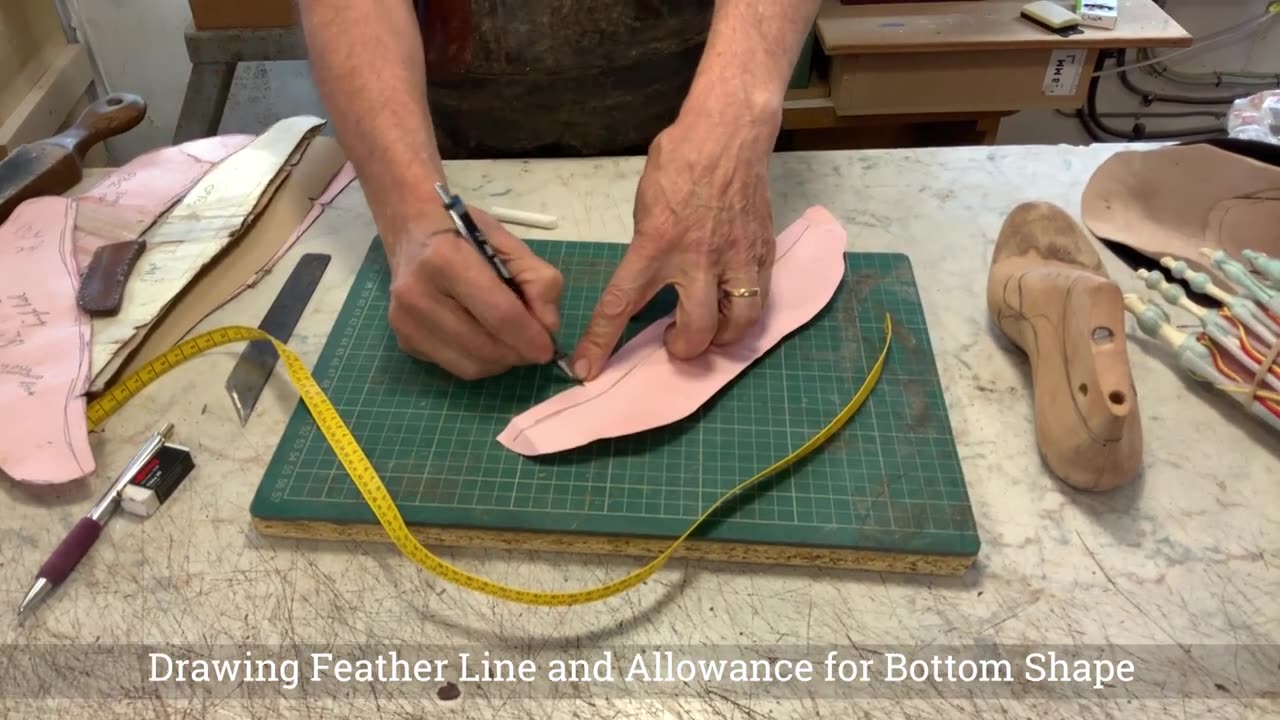Premium Only Content

24 How to make Stiffener Patterns - Part 2 of 3
Creating stiffener patterns involves a process that is often specific to the material you are using, the type of stiffener required, and the intended application. Below is a general guide that you can adapt based on your specific needs and materials:
### Materials Needed:
- **Paper or Cardboard:** For creating the pattern.
- **Measuring Tools:** Ruler, measuring tape, or any other suitable measuring instrument.
- **Pen or Pencil:** For marking and drawing.
### Steps:
1. **Understand the Purpose:**
- Determine the purpose of the stiffener (e.g., for a garment, accessory, or structural application).
2. **Material Selection:**
- Identify the material for the stiffener (e.g., interfacing, plastic, metal, etc.).
3. **Measurements:**
- Take precise measurements of the area where the stiffener will be applied.
- Consider the desired shape and size of the stiffener.
4. **Drafting the Pattern:**
- Using your measurements, sketch the pattern on paper or cardboard.
- Ensure accuracy and symmetry in your design.
5. **Add Seam Allowance:**
- If applicable, add seam allowances to your pattern to accommodate stitching or joining with other pieces.
6. **Labeling:**
- Clearly label your pattern with any necessary information, such as the type of stiffener, size, and any directional instructions.
7. **Cutting:**
- Carefully cut out the pattern along the outlined edges.
8. **Testing:**
- If possible, create a prototype using inexpensive materials to test the fit and effectiveness of your stiffener.
9. **Refinement:**
- Make any necessary adjustments to the pattern based on the testing results.
10. **Finalization:**
- Once satisfied with the prototype, transfer the final pattern to your chosen stiffening material.
- Cut out the stiffener following the pattern.
11. **Application:**
- Apply the stiffener according to your project's instructions, whether it involves sewing, adhesive, or other attachment methods.
12. **Documentation:**
- Document your stiffener pattern for future reference. Include details such as materials used, dimensions, and any specific application instructions.
Always consider the specific requirements of your project and materials when creating stiffener patterns. This guide provides a general outline, but the details may vary depending on the context of your application.
-
 LIVE
LIVE
Viss
1 hour ago🔴LIVE - PUBG Solo Tactics To Win Consistently! - PUBG 101
94 watching -
 2:05:54
2:05:54
Steven Crowder
4 hours agoLive Reaction: RFK Faces Senate Grilling After Employees Demand His Resignation
261K197 -
 1:02:58
1:02:58
The Rubin Report
3 hours agoPress Stunned by Trump’s Brutally Honest Message for Elon Musk
46.7K41 -
 LIVE
LIVE
Rebel News
1 hour agoPolice chief says 'comply' with intruders, Carney on temp workers, Trump on tariffs | Rebel Roundup
286 watching -
 DVR
DVR
Neil McCoy-Ward
1 hour ago🚨 Hospitals Are Bracing For MASS Casualties...
7.84K1 -

The Mel K Show
2 hours agoMORNINGS WITH MEL K - NATO Cognitive Warfare & Post WWII Betrayal Finally Exposed 9-4-25
20.2K15 -
 LIVE
LIVE
The Shannon Joy Show
4 hours agoCOVID Not A ‘Lab Leak’, It Was Created At UNC Chapel Hill! LIVE - Exclusive With Dr. David Martin
246 watching -
 LIVE
LIVE
LFA TV
6 hours agoLFA TV ALL DAY STREAM - THURSDAY 9/4/25
3,676 watching -
 59:56
59:56
Grant Stinchfield
2 hours ago $1.35 earnedGas Prices Broke Him – Newsom Quits the Fight!
11.3K6 -
 59:38
59:38
Trumpet Daily
2 hours ago $0.99 earnedTrumpet Daily LIVE | Sept. 4, 2025
10.8K3